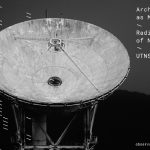UTNS 5140 A
Transdisciplinary Graduate Class
Wednesday 12:10-2:50pm
66 West 12th, Room 517
The New School University
Spring 2022
Pascal Glissmann, Associate Professor of Communication Design, Parsons
Selena Kimball, Associate Professor of Contemporary Art Practice, Parsons
Week 1: 1/24 Introduction
This course aims to provoke dialogue about practices of observation, and invent new ways of looking. What exactly does it mean to “observe”? Observation is neither neutral nor passive—the very process of looking can both shape the thing being observed and change the person who is doing the looking.
This course will explore the ways that the very act of structured attention changes the perceiver(s) and by extension creates new experiences and understandings. We will investigate how past practices of observation have actually defined what we know about the world and how structured and documented observations might instigate change.
Students will explore new ways of observing in order to deepen their existing research. Inspired by precedents—e.g. the archives of everyday life created by the British Mass Observation Movement; practices used by German polymath Alexander von Humboldt; current research of the Observational Practices Lab: objectamerica.org—students will develop their own experimental ways to observe an object, from the rigorously structured to the playfully absurd. These new practices of observation—including senses, specialized instruments, and speculation—will be developed, conducted and recorded in the conceptual framework of fluxus event scores linking back to John Cage’s teaching at The New School during the 1950s. This collection of “Observation Event Scores”—brief verbal or visual notations—will inspire students to apply different ways of looking at their object of investigation.
Students will: (1) create a visual archive to document different ways of looking at a research object; (2) develop and conduct a workshop that teaches an experimental methodology of observation; and (3) a final project out of these methods of observation.
Throughout its long history, observation has always been a form of knowledge that straddled the boundary between art and science, high and low sciences, elite and popular practices. As a practice, observation is an engine of discovery and a bulwark of evidence…It is pursued in solitude but also in the company of thousands. (Daston & Lunbeck, 2011, p. 7)
Week 1: Workshop
What is a glass of water? Observe a glass of water through the lens of your discipline and document your process as a short instruction.
Prepare For Next Week:
1. Identify an “object” of study that seems to have the most potential or that extends your current research in an interesting manner. Use the four instructions developed by breakout groups in class to conduct four observations of this object. Document process/findings on this MURAL board.
2. Case Study: Introduce a researcher that interests you (artist, cook, scholar, scientist, etc.) and discuss their approach to observation—use visuals to explain their method (3 mins)
Resources & Readings For Next Week:
Fluxus Event Scores
the Fluxus P e r f o r m a n c e Workbook
edited by Ken Friedman, Owen Smith and Lauren Sawchyn
a Performance Research e-publication 2002
Draw a Line and Follow It
Nam Jun Paik performing event score: Composition 1960 No. 10
Daston, L. (2011). Introduction. In Histories of Scientific Observation (Eds. Daston, L. and Lunbeck, E.). pp. 1-8
Highmore, B. “Familiar Things” in Ordinary Lives: Studies in the Everyday, Routledge, 2011 pp. 59-85
(You will find the readings on Canvas)





Comments by Pascal